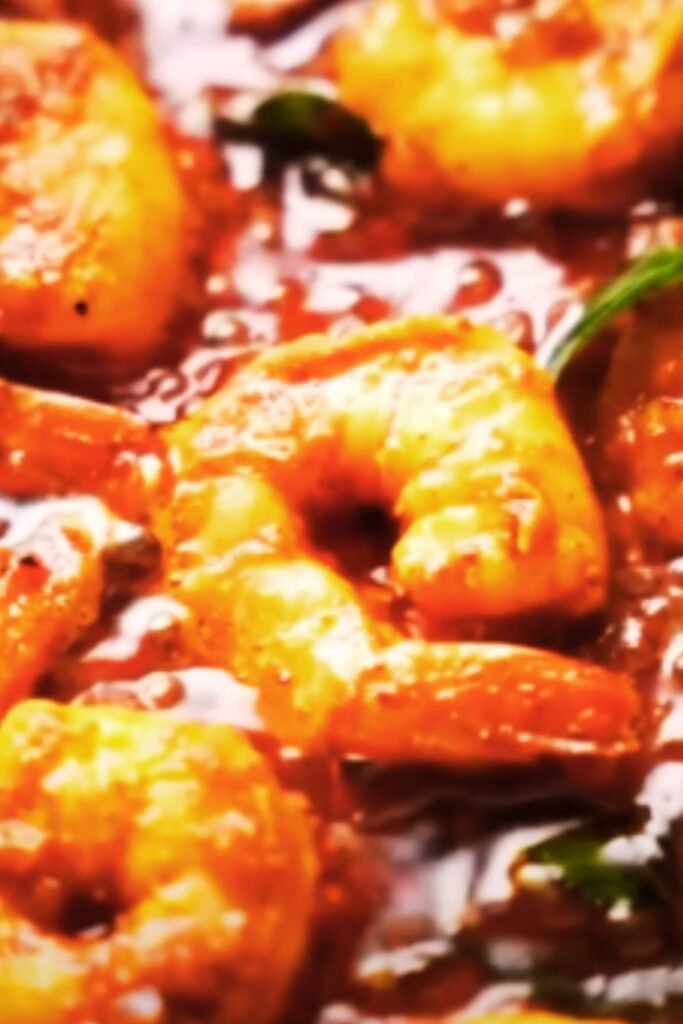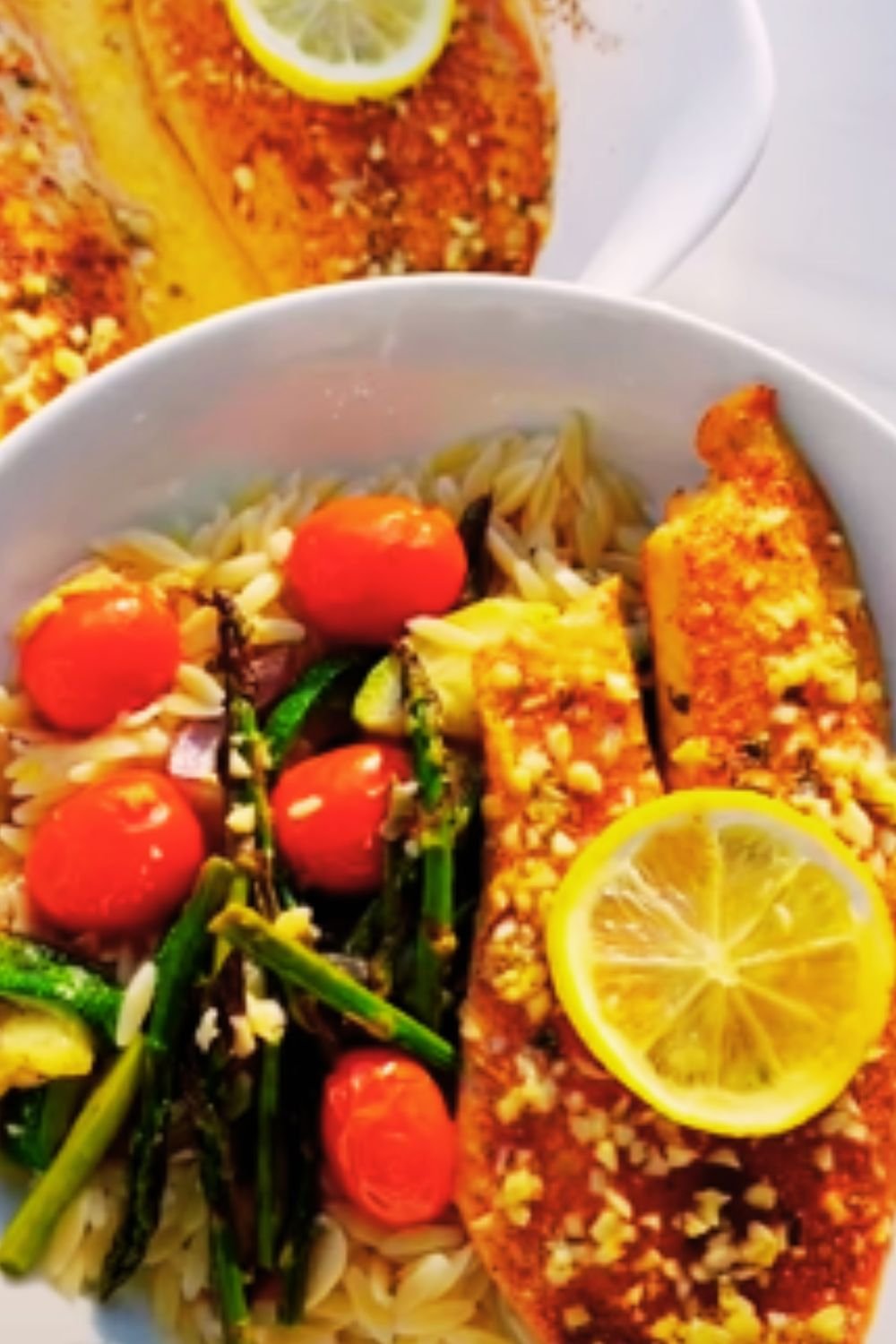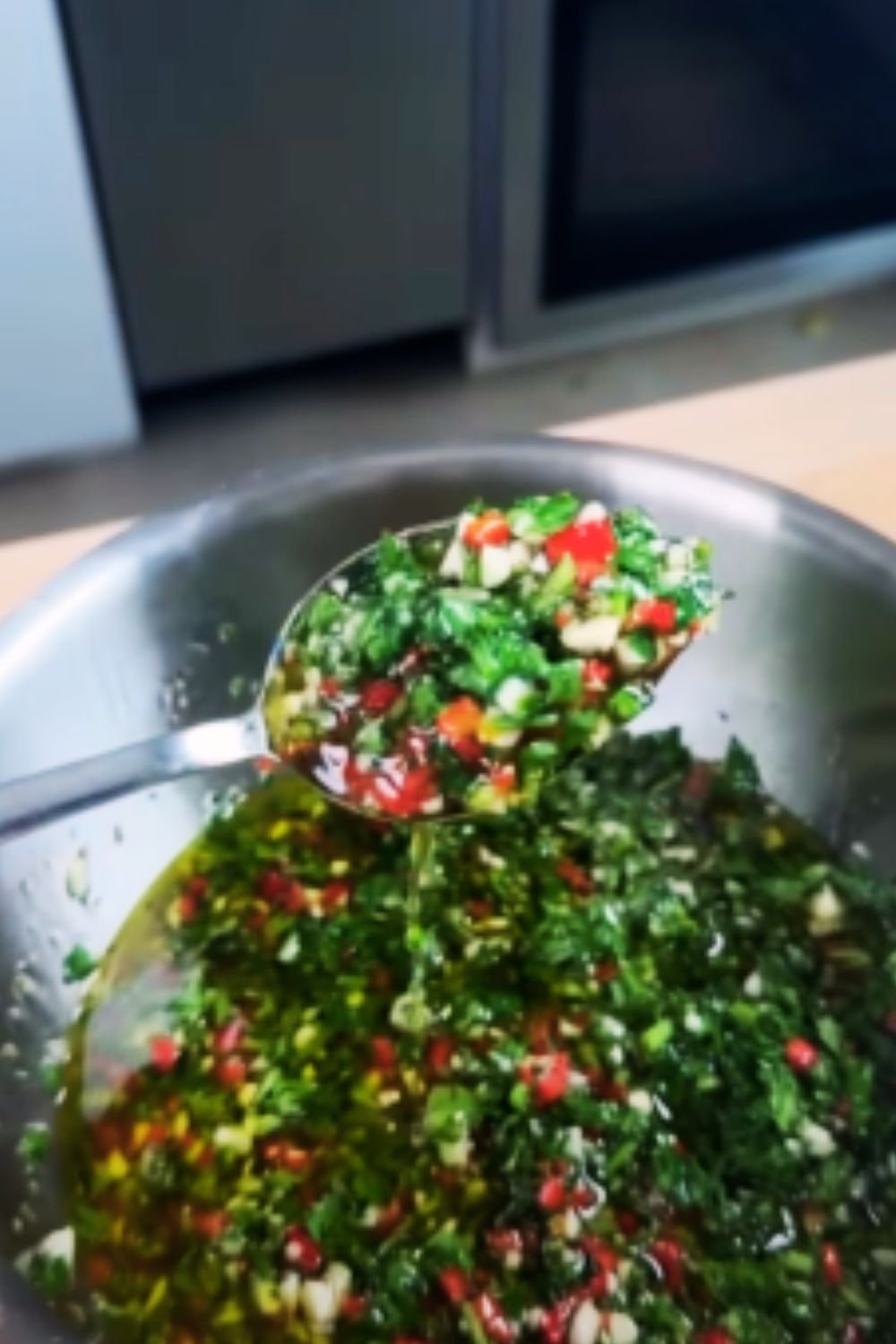There’s something magical about the sizzle of prawns hitting a hot wok. That distinctive sound, followed by the aromatic release of garlic and chilli, instantly transports me to the bustling street food markets of Southeast Asia. Today, I’m sharing my absolute favorite recipe for Asian Chilli Garlic Prawns – a dish that perfectly balances heat, sweetness, and umami in every succulent bite.
As someone who’s spent years perfecting this recipe through countless attempts (and some delicious failures!), I can promise you this: master these techniques, and you’ll never need to order takeout again when the craving strikes. The best part? You’ll have this impressive dish on your table in under 20 minutes.
The Secret Behind Perfect Chilli Garlic Prawns
The magic of this dish lies not just in the ingredients but in understanding the cooking process. Prawns cook incredibly quickly – overcook them even slightly, and they transform from juicy and tender to rubbery and disappointing. I’ve learned this lesson the hard way!
What makes Asian Chilli Garlic Prawns special is the balance of flavors: the natural sweetness of fresh prawns, the aromatic punch of garlic, the complex heat from different types of chilli, and the umami depth from soy and oyster sauce. When these elements come together in perfect harmony, the result is utterly addictive.
Ingredients Breakdown
Before we dive into the cooking process, let’s talk about the star ingredients and why they matter:
Prawns Selection
The foundation of this dish is, of course, the prawns themselves. Here’s what you need to know:
- Size matters: I prefer large or extra-large prawns (16-20 count per pound) as they’re easier to cook properly and make for a more impressive presentation.
- Fresh vs. frozen: While fresh is wonderful if you have access to it, high-quality frozen prawns work beautifully too. I often keep a bag in my freezer for impromptu cooking sessions.
- Shell on or off?: This is personal preference, but I find that cooking prawns with the shell on (but deveined) adds more flavor. For easy eating, I remove the shell but leave the tail on.
The Aromatic Foundation
The aromatic base of this dish creates the foundation of flavor:
- Garlic: Don’t be shy here – this dish calls for at least 6-8 cloves, finely minced or crushed. The garlic should be prominent but not burnt.
- Ginger: Fresh ginger adds a warming, spicy note that balances the dish perfectly.
- Spring onions (scallions): These add a mild onion flavor and beautiful color contrast.
The Heat Elements
The “chilli” component can be customized to your heat preference:
- Fresh red chillies: These provide vibrant color and fresh heat.
- Dried chilli flakes: These add a different dimension of heat that permeates the oil.
- Chilli paste or sambal oelek: This adds consistency and depth to the sauce.
The Sauce Components
The sauce brings everything together:
- Soy sauce: Provides salt and umami (I prefer light soy sauce for this dish).
- Oyster sauce: Adds richness and body to the sauce.
- Fish sauce: Just a touch adds incredible depth (don’t worry, it won’t taste fishy).
- Sugar or honey: Balances the heat and saltiness.
- Lime juice: Added at the end for brightness.
Complete Ingredients List
Here’s everything you’ll need to serve 4 people:
| Ingredient | Quantity | Notes |
|---|---|---|
| Large prawns | 500g (about 1 lb) | Peeled and deveined, tails on |
| Garlic | 6-8 cloves | Finely minced |
| Fresh ginger | 2 tablespoons | Finely minced |
| Red chillies | 2-4 | Finely sliced (adjust to taste) |
| Spring onions | 6 | White parts sliced thinly, green parts for garnish |
| Vegetable oil | 2 tablespoons | For stir-frying |
| Sesame oil | 1 teaspoon | For flavor |
| Light soy sauce | 2 tablespoons | Provides salt and umami |
| Oyster sauce | 1 tablespoon | Adds richness |
| Fish sauce | 1 teaspoon | Depth enhancer |
| Sugar or honey | 1 teaspoon | Balances flavors |
| Lime | 1 whole | Half for sauce, half for serving |
| Dried chilli flakes | 1 teaspoon | Optional, for extra heat |
| Fresh coriander (cilantro) | 1/4 cup | For garnish |
| Sesame seeds | 1 tablespoon | For garnish |
Equipment Needed
You’ll need these basic tools to make this dish shine:
| Equipment | Purpose |
|---|---|
| Wok or large frying pan | The wide surface allows for quick cooking at high heat |
| Sharp knife | For prepping ingredients |
| Cutting board | For safe preparation |
| Small bowl | For mixing sauce ingredients |
| Wooden spoon or spatula | For stir-frying |
| Paper towels | For drying prawns |
Preparation Steps
The key to a successful stir-fry is having everything prepped before you start cooking:
- Prepare the prawns: If frozen, thaw completely. Pat dry with paper towels (this is crucial for proper searing). Season lightly with salt and pepper.
- Prep the aromatics: Mince the garlic, ginger, and slice the chillies and spring onions. Keep them in separate piles as they’ll be added at different times.
- Make the sauce: Combine soy sauce, oyster sauce, fish sauce, sugar/honey, and juice from half a lime in a small bowl. Mix well and set aside.
- Organize your workspace: Have everything within arm’s reach of your wok or pan. Once you start cooking, things will move quickly!

Cooking Method
Now for the exciting part – the cooking process:
- Heat your wok: Place your wok or large frying pan over high heat until it’s very hot (you should see a slight smoke).
- Add the oils: Pour in the vegetable oil and sesame oil, swirling to coat the surface.
- Sear the prawns: Add the prawns in a single layer (work in batches if needed). Let them sear for 1 minute without moving them.
- First flip: Turn the prawns and cook for another 30 seconds. They should be partly pink but not fully cooked.
- Add aromatics: Reduce heat to medium-high. Add garlic, ginger, white parts of spring onions, and fresh chillies. Stir-fry for 30 seconds until fragrant but not burnt.
- Pour in the sauce: Add your prepared sauce and dried chilli flakes if using. Toss everything together.
- Final cooking: Let everything simmer for 1-2 minutes until the prawns are fully cooked and the sauce has slightly thickened. Be careful not to overcook the prawns.
- Finish the dish: Turn off the heat. Sprinkle with the green parts of spring onions, fresh coriander, and sesame seeds.

Nutritional Information
For those keeping track of their nutritional intake, here’s the approximate breakdown per serving:
| Nutrient | Amount | % Daily Value* |
|---|---|---|
| Calories | 215 kcal | 10.8% |
| Protein | 25g | 50% |
| Total Fat | 9g | 13.8% |
| – Saturated Fat | 1.5g | 7.5% |
| Carbohydrates | 6g | 2% |
| – Sugars | 2g | 2.2% |
| Fiber | 0.5g | 2% |
| Sodium | 890mg | 37.1% |
| Potassium | 320mg | 9.1% |
| Vitamin C | 15mg | 25% |
| Iron | 2.2mg | 12.2% |
*Based on a 2,000 calorie diet
Serving Suggestions
This versatile dish pairs beautifully with several sides:
- Steamed jasmine rice: The perfect canvas to soak up all that delicious sauce.
- Coconut rice: Adds another layer of flavor that complements the dish beautifully.
- Rice noodles: For a more substantial meal.
- Stir-fried vegetables: For a complete meal, consider adding some bok choy, broccoli, or snow peas.
- Fresh cucumber salad: The cool crispness offers a refreshing contrast to the spicy prawns.
For a complete Asian-inspired feast, I love serving these prawns alongside some vegetable spring rolls and a simple cucumber salad dressed with rice vinegar.

Variations to Try
Once you’ve mastered the basic recipe, try these variations:
Thai-Inspired Version
Add a tablespoon of Thai red curry paste to the sauce and finish with coconut milk for a creamier dish.
Chinese-Style
Use Shaoxing wine instead of lime juice, add some fermented black beans, and finish with a cornstarch slurry for a glossy sauce.
Vietnamese Twist
Add lemongrass to the aromatics and serve with rice paper wrappers and fresh herbs for DIY spring rolls.
Low-Carb Option
Serve over cauliflower rice or alongside a big salad instead of traditional rice.
Common Mistakes to Avoid
Even experienced cooks make these errors when preparing Asian Chilli Garlic Prawns:
- Not drying the prawns properly: Wet prawns will steam rather than sear. Always pat them dry with paper towels.
- Overcrowding the pan: Work in batches if necessary. Prawns need space to sear properly.
- Using low heat: A properly hot wok is essential for that restaurant-quality sear.
- Overcooking the prawns: They cook in minutes—sometimes seconds. Remove them from heat while they’re still slightly translucent in the center; they’ll continue cooking from residual heat.
- Adding garlic too early: Garlic burns easily and becomes bitter. Add it after the prawns have had their initial sear.
Storage and Reheating Tips
Ideally, enjoy this dish fresh from the wok, but if you have leftovers:
- Refrigeration: Store in an airtight container for up to 2 days.
- Reheating: Gently warm in a pan over medium-low heat just until warmed through. Avoid microwave reheating as it can make the prawns tough.
- Freezing: Not recommended as the texture of the prawns will suffer significantly.
Health Benefits of Key Ingredients
This dish isn’t just delicious—it’s nutritious too!
| Ingredient | Health Benefits |
|---|---|
| Prawns | High in protein, low in calories, rich in selenium, B12, and iodine |
| Garlic | Contains compounds with antimicrobial and heart-protective properties |
| Ginger | Anti-inflammatory properties, may help with nausea and digestion |
| Chillies | Rich in capsaicin, which may boost metabolism and contain antioxidants |
| Spring Onions | Good source of vitamin K, vitamin C, and fiber |
| Coriander | Rich in antioxidants and may help with digestion |
My Personal Tips from Years of Making This Dish
After countless iterations of this recipe, I’ve discovered some tricks:
- The marinade shortcut: If time allows, marinate the dried prawns in a bit of baking soda (1/2 tsp per pound) for 15-30 minutes, then rinse well. This makes them plumper and juicier—a restaurant technique!
- The garlic trick: Instead of just mincing, crush half the garlic for a more intense flavor that permeates the oil.
- The dual chilli approach: Use both fresh and dried chillies for a more complex heat profile.
- The sauce secret: A touch of cornstarch (about 1/2 teaspoon mixed with 1 tablespoon water) added at the very end creates a glossy sauce that clings to the prawns.
- The final flourish: A sprinkle of MSG (if you’re not averse to it) or nutritional yeast adds that elusive “can’t stop eating this” quality.

Frequently Asked Questions
Q: Can I use shrimp instead of prawns? Absolutely! The terms are often used interchangeably in many places. Just adjust cooking time based on size—smaller shrimp will cook more quickly.
Q: I don’t have a wok. Can I still make this dish? Yes, a large frying pan works well too. The key is having enough surface area for the prawns to sear rather than steam.
Q: How spicy is this dish? As written, it’s moderately spicy—enough to notice the heat but not overwhelming. You can easily adjust by changing the amount of fresh and dried chillies.
Q: Can I make this dish ahead for a dinner party? I don’t recommend cooking it completely ahead of time as prawns can easily overcook when reheated. However, you can prep all ingredients and make the sauce earlier in the day.
Q: What can I substitute for oyster sauce? If you’re avoiding seafood, try vegetarian “oyster” sauce made from mushrooms. In a pinch, hoisin sauce mixed with a bit of soy sauce will work, though the flavor will be slightly different.
Q: Is this dish gluten-free? Not as written, but it’s easy to adapt using tamari instead of soy sauce and checking that your oyster sauce is gluten-free (some brands are).
Q: How do I know when the prawns are perfectly cooked? Perfectly cooked prawns form a “C” shape and have turned from translucent to opaque pink. If they curl into a tight “O” shape, they’re overcooked.
Q: Can I add vegetables to this dish? Absolutely! Bell peppers, snow peas, or baby corn work wonderfully. Add harder vegetables before the prawns and quick-cooking ones with the sauce.
Environmental Considerations When Buying Prawns
As a responsible home cook, I’ve become increasingly conscious of sustainable seafood choices:
- Look for certifications: MSC (Marine Stewardship Council) or ASC (Aquaculture Stewardship Council) certified prawns are more sustainable options.
- Consider the source: Prawns farmed in recirculating aquaculture systems generally have less environmental impact than those from coastal pond farming.
- Know your prawns: Black tiger prawns, Pacific white shrimp, and spot prawns are often more sustainable choices than other varieties.
Final Thoughts
My journey with this dish began years ago in a tiny apartment with limited ingredients and has evolved through countless dinner parties and family meals. What I love most about Asian Chilli Garlic Prawns is how it exemplifies the beauty of balance in cooking – the interplay of heat, sweet, sour, and savory elements that makes Southeast Asian cuisine so compelling.
Don’t be intimidated by the ingredient list or cooking process. Once you’ve made this dish a couple of times, you’ll find yourself reaching for these flavors again and again, perhaps even improvising your own variations.
Remember, cooking is as much about the journey as the destination. Enjoy the sizzle, the aromas, and ultimately, the satisfaction of creating something truly delicious in your own kitchen.


